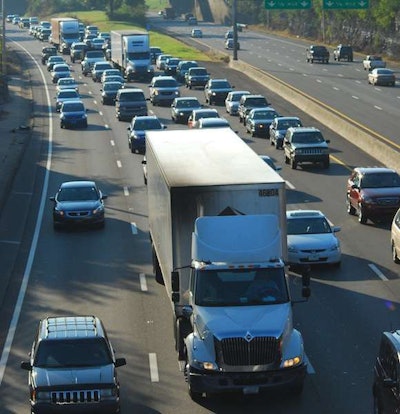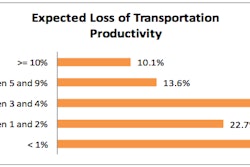 Unintended consequence? Drivers and industry advocates are saying the new hours of service provisions are dumping them out on the highways at the most congested hours of the day, dinging productivity, increasing stress and likely not improving safety.
Unintended consequence? Drivers and industry advocates are saying the new hours of service provisions are dumping them out on the highways at the most congested hours of the day, dinging productivity, increasing stress and likely not improving safety.A full 65 percent of the 4,000 truck drivers surveyed by the Owner-Operator Independent Drivers Association said the new hours of service rules have caused them to receive less income, while 46 percent report feeling more fatigued since the new rules took effect.
OOIDA released the results of its membership survey Nov. 20. Its conclusion, OOIDA says, is the new rules “have a negative impact on truck drivers’ ability to drive while rested, operate their businesses efficiently and make a living,” according to a press release.
Of the respondents, 56 percent say they have lost mileage and per-week loads hauled because of the new rules. Drivers also said via survey comments that they don’t have as much home time and they have increased stressed.
The American Transportation Research Institute also released a study this week that said drivers have lost income, miles and at-home time to the rule, in addition to feeling more fatigued and more stressed.
|
More voices on hours | As Congress prepares to hear small-business trucking’s concerns on hours, in this special-edition podcast find further voices of Overdrive reader owner-operators on the July 1 hours changes’ economic and safety impacts. The podcast is a follow-up to podcast published Monday, in which drivers said they need more professional discretion. Click here to listen to that one. |
Todd Spencer, OOIDA’s executive vice president, says FMCSA “micromanages” drivers, and the new rules take away from highway safety rather than help it.
“Instead of providing the flexibility to drive when rested and stop when tired, the new rules have put drivers in the position of driving more hours than ever and in the worst traffic conditions, and spending less time at home,” Spencer said. “How is that safe?”
The new hours provisions, which became effective July 1, restrict drivers’ flexibility, disabling them from working around unpredictable factors like weather and traffic, OOIDA says.
Moreover, the restart provisions — the two 1 a.m. to 5 a.m. periods and the once-per-168-hours requirement — exacerbate the problem of waiting at shippers or receivers, which OOIDA member respondents say has forced them to lose time at home. It’s also caused them to try to take on shorter hauls and decreased their income, OOIDA reports.
The American Trucking Associations also Nov. 20 reiterated its stance against the new rule, saying it hopes FMCSA and Congress “swiftly address” the rules and the problems they’re creating for the industry.
“From the outset, ATA was confident the hours-of-service rule changes were based on politics, not data,” said ATA president and CEO Bill Graves. “Well now we’re seeing mounting evidence that rather than solving anything, these rules are creating many problems for drivers and fleets alike.”
The U.S. House is holding a hearing Thursday, Nov. 21, in which it will hear testimony from small businesses as to how the hours rule has impacted their operation.
ATA in the announcement voiced its support for the TRUE Safety Act, a bill proposed last month in the House that, if passed, would delay the new hours rule until the Government Accountability Office could study FMCSA’s methodology in creating the rule. Click here to see Overdrive‘s coverage of the bill.











